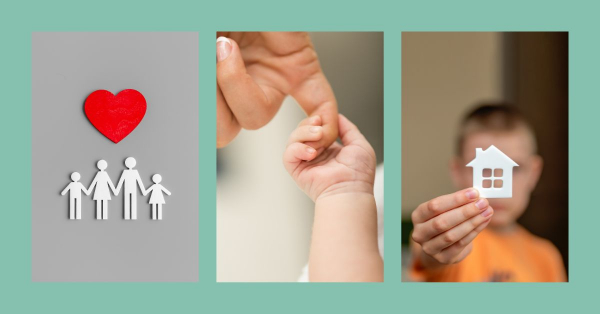9 Ways to Smooth the Transition from Foster Care into an Adoptive Home
Whether you are adopting a foster child currently in your home or receiving an adoptive placement for a child who is living in another foster home, making the transition from foster care child to an adopted child can be tough on kids. It impacts them emotionally as well as physically. Adoptive and foster parents need to be aware of potential issues and work to make the transition smooth. Here are a few ways you can accomplish this change in a positive way.
1. Talk to the Kids
One of the most important things you can do is to talk to the foster children if you’re the foster parent. Help young children understand what it means to be adopted. Older kids may have questions about their biological parents as well as what it will mean to have adoptive parents. They may feel torn because they are losing one family to gain another. Talk to them and help them feel comfortable talking to you about their feelings and fears.
2. Plan for Pre-Placement Visits
If you’re adopting a child who is living with another foster family, you may need to plan to visit with the child before you take him/her home to live with you. Set up meetings with the foster family either at your home, their home, or another location. You may do this through a caseworker, but it’s an important part of the transition period. The number of visits will vary based on the child’s age and other factors, but it shouldn’t be overlooked.
3. Talk to the Foster Family
Even if the child is an infant and few pre-placement visits are needed, you must talk to the foster family. They can provide information about the child, their likes and dislikes, routines, and other things that can help make the transition easier for everyone. The more you know about a child’s background, the less stressed the change will be for your child and you.
4. Create a Book of The Child’s History
Foster families can help in this time by creating a book about the child. Many agencies and caseworkers require a storybook for the child to help them develop a sense of history. Make sure the book is updated and includes details about their life in foster care as well as any other information you may have learned. Not only will the book be important to the adoptive parents, but it will give the child a sense of history as well.
5. Find Adoption Resources
You should learn about any adoption resources available to you. This not only includes any financial help, such as benefits for adoption assistance, but groups designed for adopted children to help your new family member feel more at ease. There are often special events dedicated to adoptive families that will make a child realize they aren’t alone.
6. Prepare Your Home
Your adopted child may be entering a strange home where nothing feels familiar or like it belongs to him or her. Create a space that is your child’s own, whether it’s a bedroom or an area in a shared bedroom. As much as you might want to decorate it ahead of time, limit yourself to providing only a few essentials so it doesn’t look bare. It’s often better to allow the child to pick up decorations and furnishings, so they can begin to feel at home.
7. Don’t Hurry the Routine
You’ll need to enroll the child in school if he or she will be switching schools. You may want to get your child set up for other activities as well, especially if your child is already active. However, you don’t want to take on too much at once. Give yourself and the child a chance to settle in before getting too busy. You might want to take a week off from work or at least a couple of days so you can spend time with your new child.
8. Give the Child Space
As excited as you are about this change in your life, your child may have mixed feelings. While you want to get to know your child and bond, it’s important to give time alone. Balance your together time with periods where your child can go to his or her room and play or hang out. You don’t want to overdo either situation but look for cues as to when your child might need extra attention or some downtime.
9. Be Prepared for Changes
Things may be moving along smoothly with your adopted children and then one day, everything changes. At some point, they are likely to feel comfortable enough to test your limits. They may break a rule or challenge you on something you say. Expect this situation as they become more comfortable with being part of your family. The child may also continue to feel a sense of loss or miss biological parents, and you must be sensitive to this issue. Encourage your child to talk to you so she or he can learn to deal with conflicting emotions. In some cases, you may even need to reach out for professional help to enable your child to adjust.
Adoption is an exciting time for new parents. However, the transition from foster care is also an emotional time filled with challenges for the child and the entire family. Make a smooth transition by following these guidelines to help your child adjust to a new life.
Do you feel there is a hole in your heart that can only be filled by a child? We’ve helped complete 32,000+ adoptions. We would love to help you through your adoption journey. Visit Adoption.org or call 1-800-ADOPT-98.







